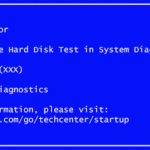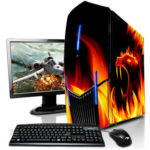How to Fix Up a Slow Computer. Many people find it annoying and frustrating when their computers are slow. They make it hard to figure out what’s wrong and fix it, which can slow down work and waste time. On the other hand, there are a number of things you can do to fix and solve slow computers. In this post, we’ll talk about some of the most common things that can cause a computer to run slowly, as well as how to fix them.
Thiojoe is the owner of the video below.
Viruses, Malware, and Infections: How to Fix a Slow PC Oh My!
Step 1: Look for malicious software.
Malware is one of the most common things that can slow down a machine. Malware is any type of software that is made to hurt, disturb, or control a computer system. Spyware can cause your computer to run more slowly by consuming system resources or starting tasks in the background. in order to thoroughly inspect your computer, use your antivirus program to look for bad software. Make sure you have the most recent version of your security software, which should have the most recent virus definitions.
Erase those Disk Errors
Step 2: Look for any mistakes on the disk.
Disk problems are another common reason why computers move slowly. If there are problems with your files, your computer could crash or run more slowly. Run the “Disk Check” tool in Windows to see if there are any problems with the disk. This piece of software will check your hard drive for mistakes and fix any problems it finds along the way. For the Disk Check tool to work, the following steps must be taken:Computer Troubleshooting
Right-click on the drive you want to use. After that, go to the Tools menu and choose Properties.
Click the Check button in the area called Error checking.
To start the disk study, click the “Scan drive” button.
Then, click Properties on the Tools menu.
Click Check in the area that says “Check for errors.”
Click Scan Drive to start the disk study.
Get rid of those annoying apps that you don’t use.
Get rid of those annoying apps you don’t use
Step 3: Get rid of apps you don’t want.
Over time, your computer might collect a lot of programs and files that you don’t use. This could make it run slower. To fix this problem, you need to get rid of any programs you aren’t using or that you don’t need. To uninstall apps, you need to do the following:
Go to the menu called “System Preferences.”
Find the Programs and Features choices on the menu.
To get rid of the program, you must first pick it and then click the Uninstall button.
Follow the directions that show up on the screen to uninstall the program.
Fixing a slow PC: You don’t have to start all of those apps at once.
Step 4: Turn off all the apps that run when the computer starts up
When you turn on your computer, a number of apps might start running in the background right away. Because they use up system resources some apps could make your computer run more slowly because they take up system resources. To fix this problem, you need to stop any apps from starting up that don’t need to. If you want to turn off apps that load at startup, do the following:
Use Ctrl + Shift + Esc to open the Task Manager.
Pick the tab that says Startup.
Select the app you want to turn off, and then press the “Disable” button.
Repeat this process for any other apps that you don’t want to start up.
Step 5: It’s time to get new hardware
How to Fix a Sluggish PC: Computer Boost
If none of the steps above fix the problem, you may need to buy new gear. You might want to upgrade your computer’s hardware if you want it to work faster and better. The following pieces of gear might need to be updated:
Increase your RAM. Adding more RAM to a machine that is slow because it doesn’t have enough memory can help it run better.
Update your hard drive. If your hard drive is old and slow, switching to a solid-state drive (SSD) will make your computer run much faster.
Update your CPU: If your computer’s chip is more than a few years old, it’s time to get a newer one.
Conclusion
In conclusion, slow computers can be frustrating, but there are several steps you can take to troubleshoot and fix the problem. By checking for malware, disk errors, and uninstalling unnecessary programs, you can improve your computer’s performance. Disabling startup programs and upgrading your hardware can also help to speed up your computer
Here is a list of links that may be useful.
How to pick the right amount of RAM.




